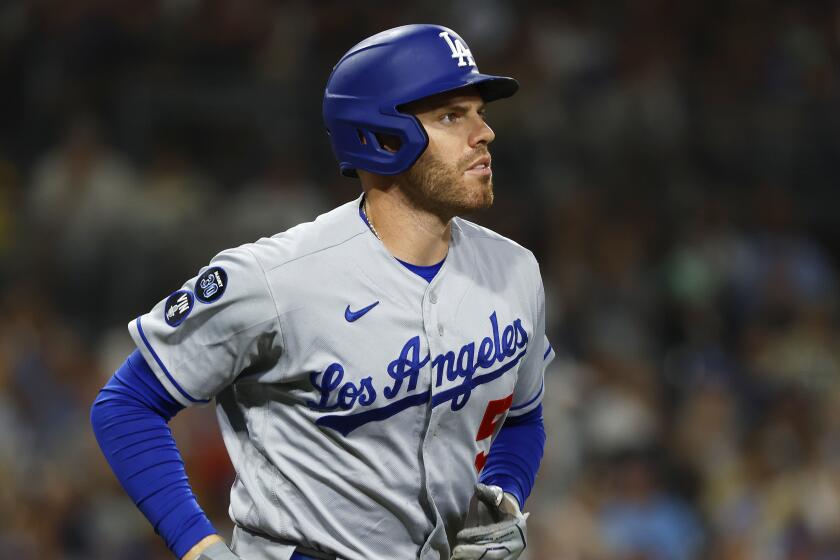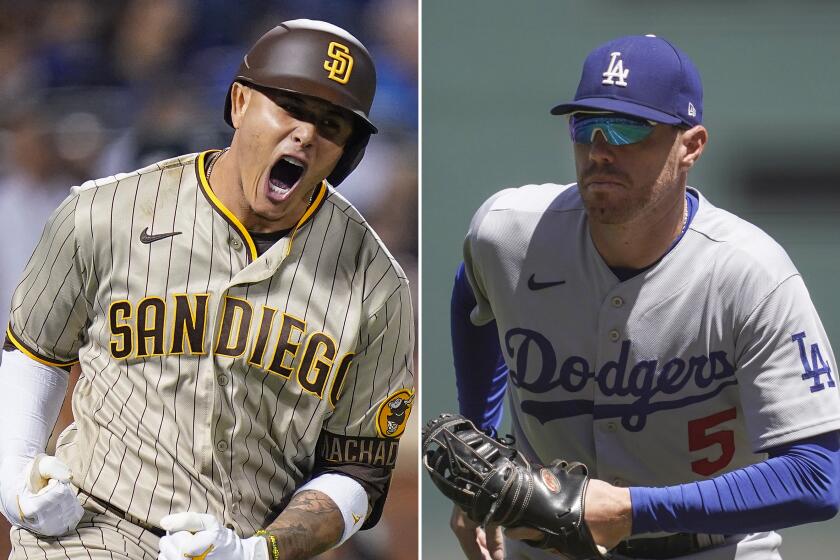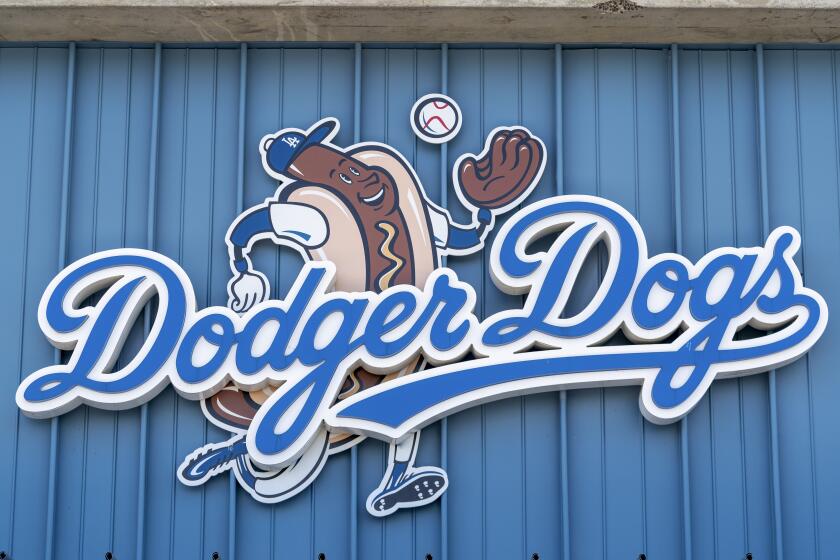A crowd gathered between Sections 308 and 310 in the right-field pavilion at Dodger Stadium. Anticipation hummed. It was 6:19 p.m. last Tuesday and the show was about to start.
Not the show with Mookie Betts and Justin Turner and Freddie Freeman. The one with the eight-piece mariachi — seven men and a woman — wearing white charros with Dodger blue moños, or bow ties, for a dash of color that gives the ballpark a feel unlike any other in Major League Baseball.
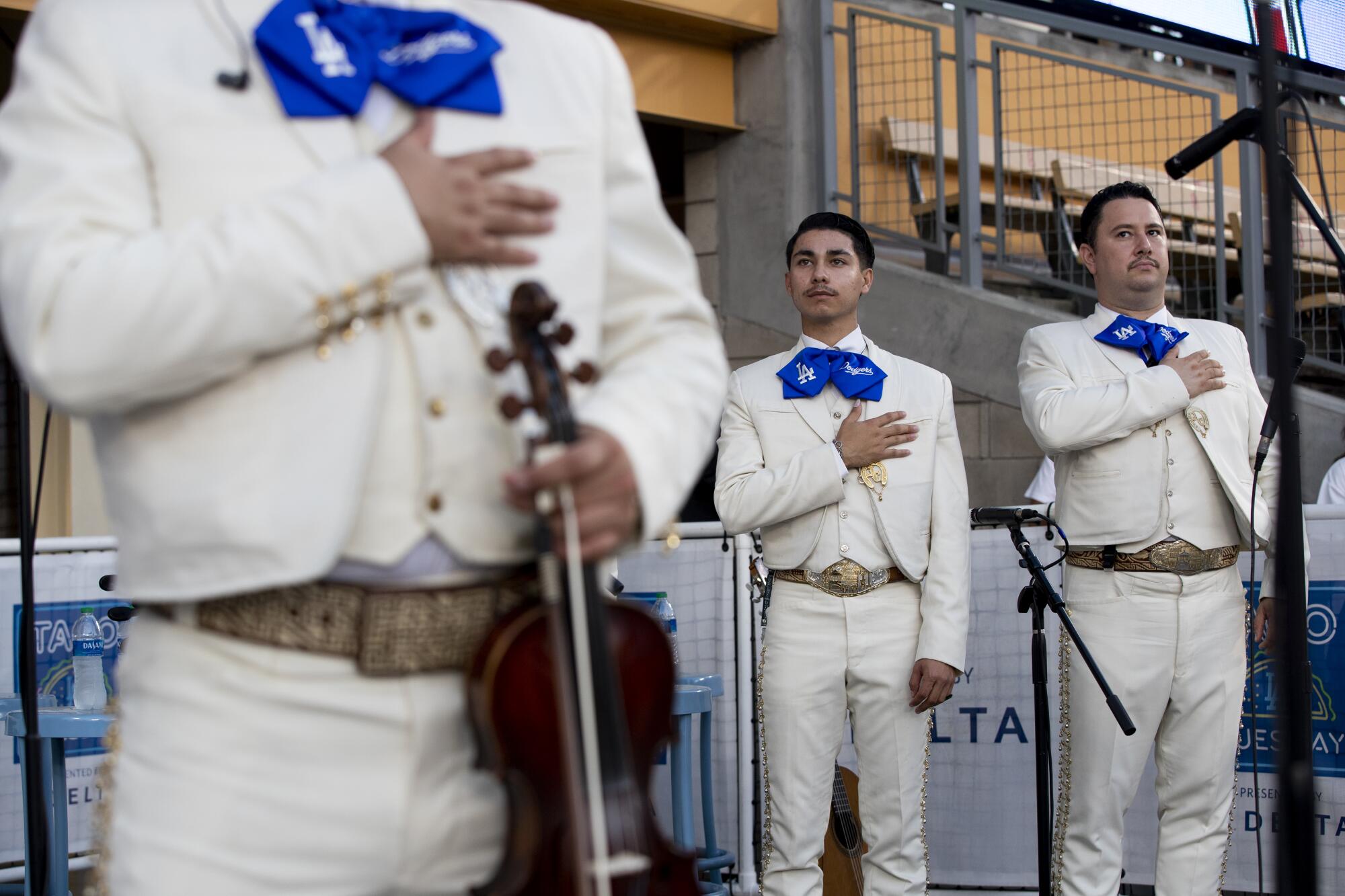
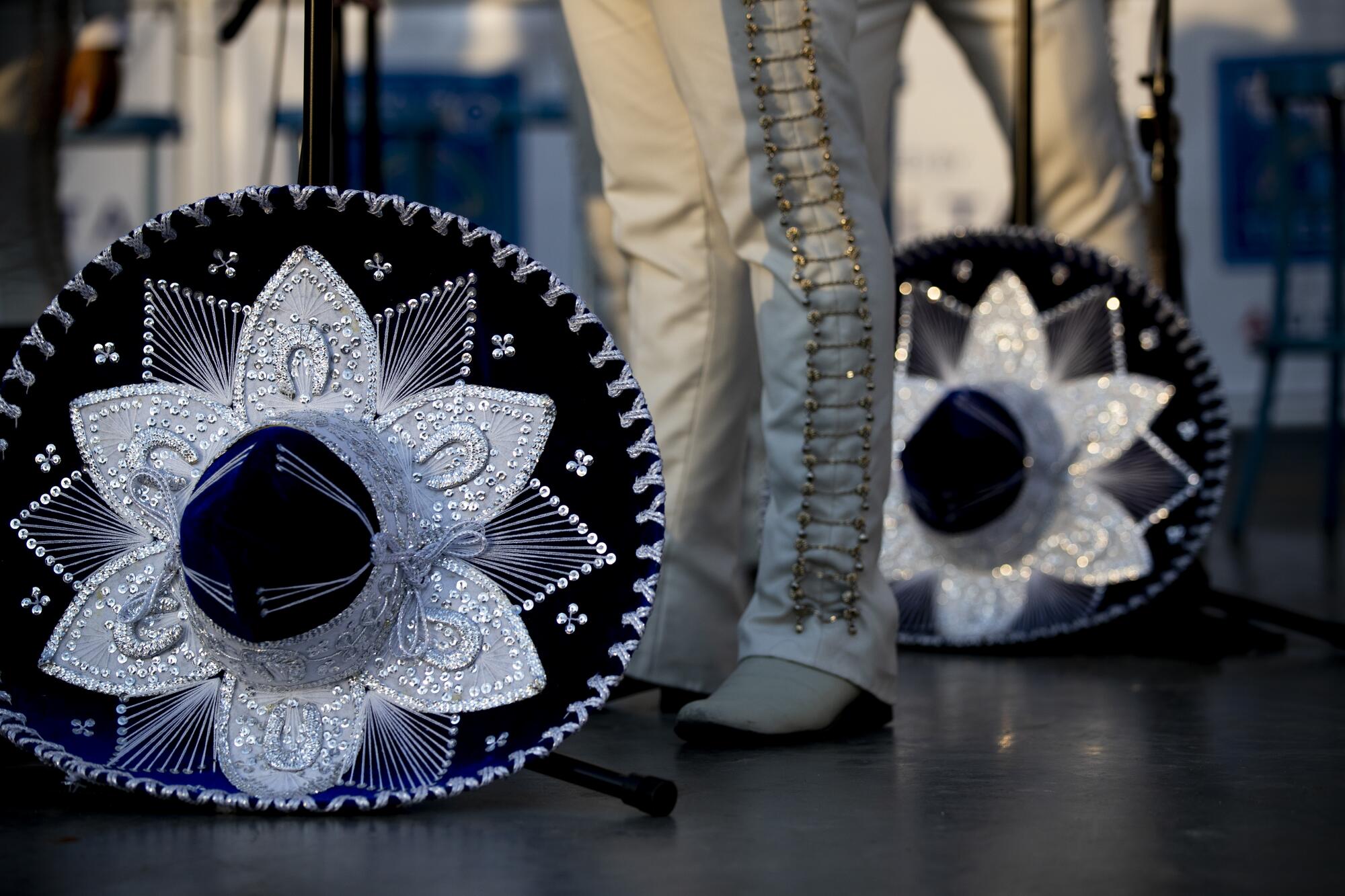
Every Tuesday this season, the Dodgers have hosted a mariachi to play before and during games. Most times, the featured group was Mariachi Garibaldi de Jaime Cuéllar, and they’ll return this week for the first playoff game against the San Diego Padres.
Last week’s show, the final of the regular season, also showcased Mariachi Garibaldi and began once the in-stadium hosts introduced the ensemble to the masses who braved L.A. traffic to arrive early.
The group performed as people observed from behind, blocking the walkway, singing along. Most had their phones out recording. There were Urías, Valenzuela and González jerseys, but plenty of Kershaw and Bellinger shirts too. One man wore a cap and jersey for the Tomateros de Culiacán, the baseball team in Julio Urías’ hometown in Mexico. A woman released a deep-throated shout or grito.
“¡Viva México!” a man yelled. “¡Viva México!”
The 10-minute set featured harp, guitar, and trumpet solos. When it was over, the oldest member of the group, Gustavo Hernández, belted an exclamation point.
“¡Que viva los Dodgers!”
Freddie Freeman thought he would end his career with the Atlanta Braves, but he has since grown comfortable with the Dodgers.
Jimmy Cuéllar grabbed his phone and recorded the rambunctious audience over his shoulder for the group’s Instagram Live stream. Hernández, a guitarist, took a selfie with fans. The crowd dispersed, but the night was just getting started. The group had four more sets to play during the game between the Dodgers and Colorado Rockies — 90 seconds after the top of the first, third, and fifth innings before performing “Take Me Out to the Ball Game” during the seventh-inning stretch.
Mariachis had played at Dodger Stadium for years, but this spotlight, performing in front of 56,000 fans, was unprecedented exposure. What began as an experiment last October became a cultural breakthrough. A year later, the in-game sounds of a live mariachi are a hallmark of the Dodger Stadium experience that will continue into the postseason for every Game 1 and potential clinching game the Dodgers play.
“It started off as a trial run to see if we could hype the crowd a bit more,” said Cierra VanDyke, the Dodgers’ manager of marketing and promotions. “And it was a hit.”
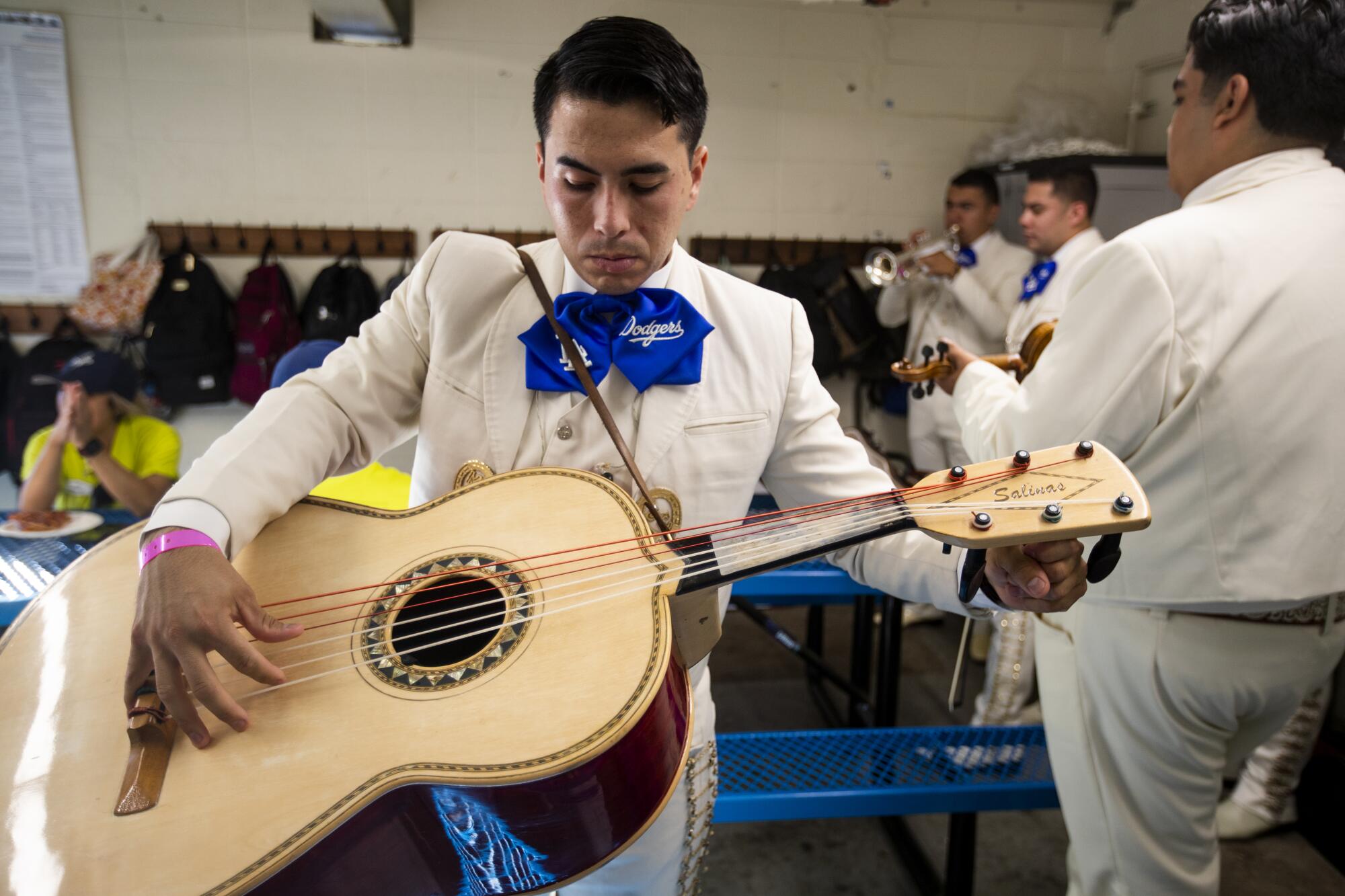
Jimmy Cuéllar, the son of Mexican immigrants, was born and raised in Bakersfield, surrounded by mariachi performers in his family. His father, Jaime, started Mariachi Garibaldi as a youth group in 1994. Jimmy was 12. He played with his father and uncles. It was a first-class education.
He left home to attend Cal State Long Beach in 2004 and joined Los Camperos, a Grammy-winning mariachi group. It was a dream come true. But, after a decade, he decided to return to his roots, or bring them to him.
He migrated his father’s mariachi group to Los Angeles. It remained named after his father — Mariachi Garibaldi de Jaime Cuéllar — but he became its director and leader. Slowly, the ensemble gained traction in the market. They’re touring for the sixth straight year in December, hitting spots in Texas, North Carolina, and Northern and Southern California. They’ll again tour with his wife Kareli’s ballet folklorico company. During the day, the couple runs a performing arts school in Bell Gardens.
“It’s a whole thing,” Cuéllar, 40, said, “we got the mariachi and the dancers.”
The mariachi group’s trajectory changed a few years ago with an unexpected phone call from the Dodgers: Could they perform before a game as fans entered the stadium behind the pavilion? They did the gig and soon the Dodgers called again asking for another show.
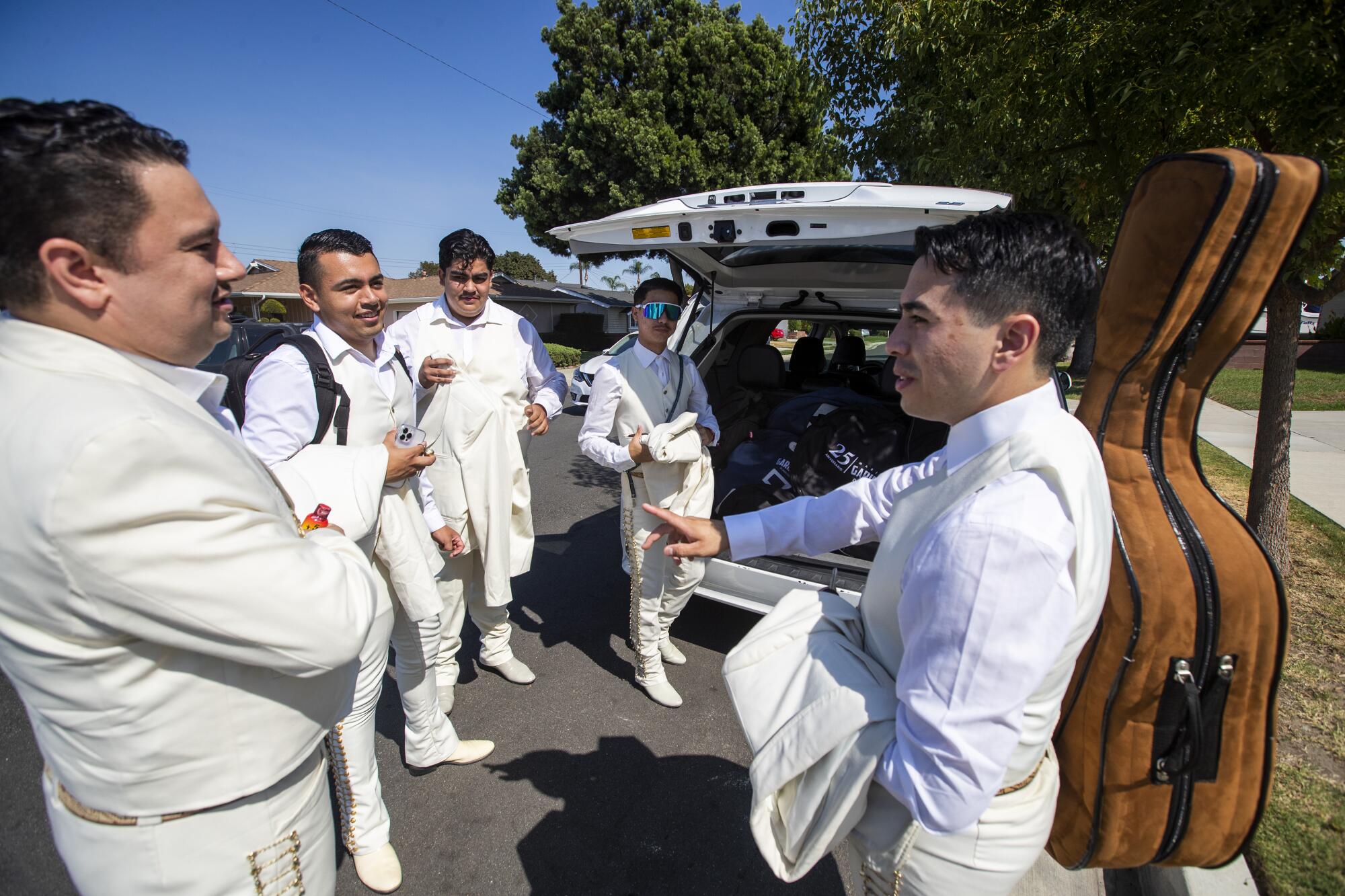
“It started off as a trial run to see if we could hype the crowd a bit more. And it was a hit.”
— Dodgers’ manager of marketing and promotions Cierra VanDyke
Last season, the Dodgers asked them to perform at Viva Los Dodgers, a pregame event the organization holds on the last Sunday of the month. The group’s profile soon went national.
It started as a regular day at the ballpark. The musicians were warming up when they got word that Kenley Jansen, then the Dodgers’ closer, asked them to go on the field to play “La Bikina” — a traditional mariachi song reinvigorated when Luis Miguel released his version in 2000 — for Urías.
They were playing when Joe Kelly, another former Dodgers pitcher, asked if any of the mariachi members would trade one of their jackets — a thoroughly embroidered navy charro — for one of his jerseys. A trumpeter, Grover Castro, agreed, but the exchange had to wait until after they performed the national anthem.
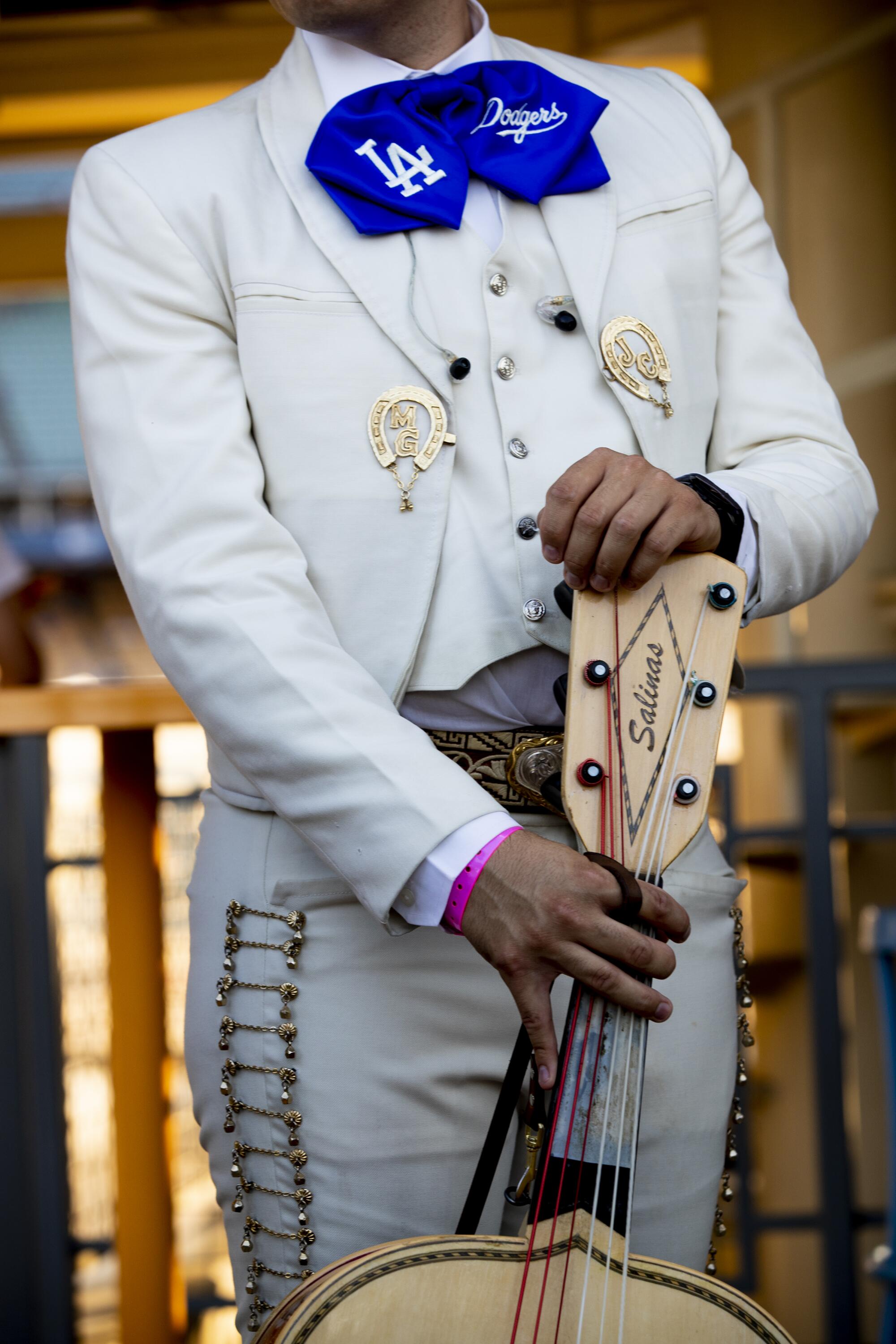
Days later, the group woke up to a text with a photo from Kelly’s wife. Kelly, whose mother is of Mexican descent, was wearing the jacket — blue with white embroidery — to the White House for the organization’s visit as defending World Series champions.
“Looking back on it, it’s still a crazy and surreal thing to happen for us,” said Castro, a 25-year-old Los Angeles native. “That was a moment of pride for us.”
Interview requests landed from across the country. Cuéllar said they woke up at 3 a.m. in Los Angeles for interviews for shows in Miami. People called asking if they could buy their own jacket. Cuéllar estimated the group sold a handful at $600 a pop.
One time, a man asked the group to come to his home in Manhattan Beach on a Saturday for his wife’s birthday. Cuéllar told him they couldn’t arrive until after midnight. No matter, the man said. His wife was a huge Dodgers fan and she wanted to see the jackets. She burst into tears when they showed up and played a few songs.
The Dodgers and San Diego Padres will meet in the National League Division Series. Here are nine things the Dodgers will need to be wary of in the series.
“Things started speeding up for us after that,” Castro said. “It put us on the map.”
The Dodgers came with another idea for them last October: What if you perform during a playoff game?
What? Dodger Stadium was where Elton John, the Beatles, the Three Tenors and Madonna played sold-out shows. Mariachi Garibaldi performed in backyards, concert halls, and everywhere in between, but nothing like this.
“We were representing our culture, representing L.A., representing Mexico and Mexican music.”
— Singer Julián Torres
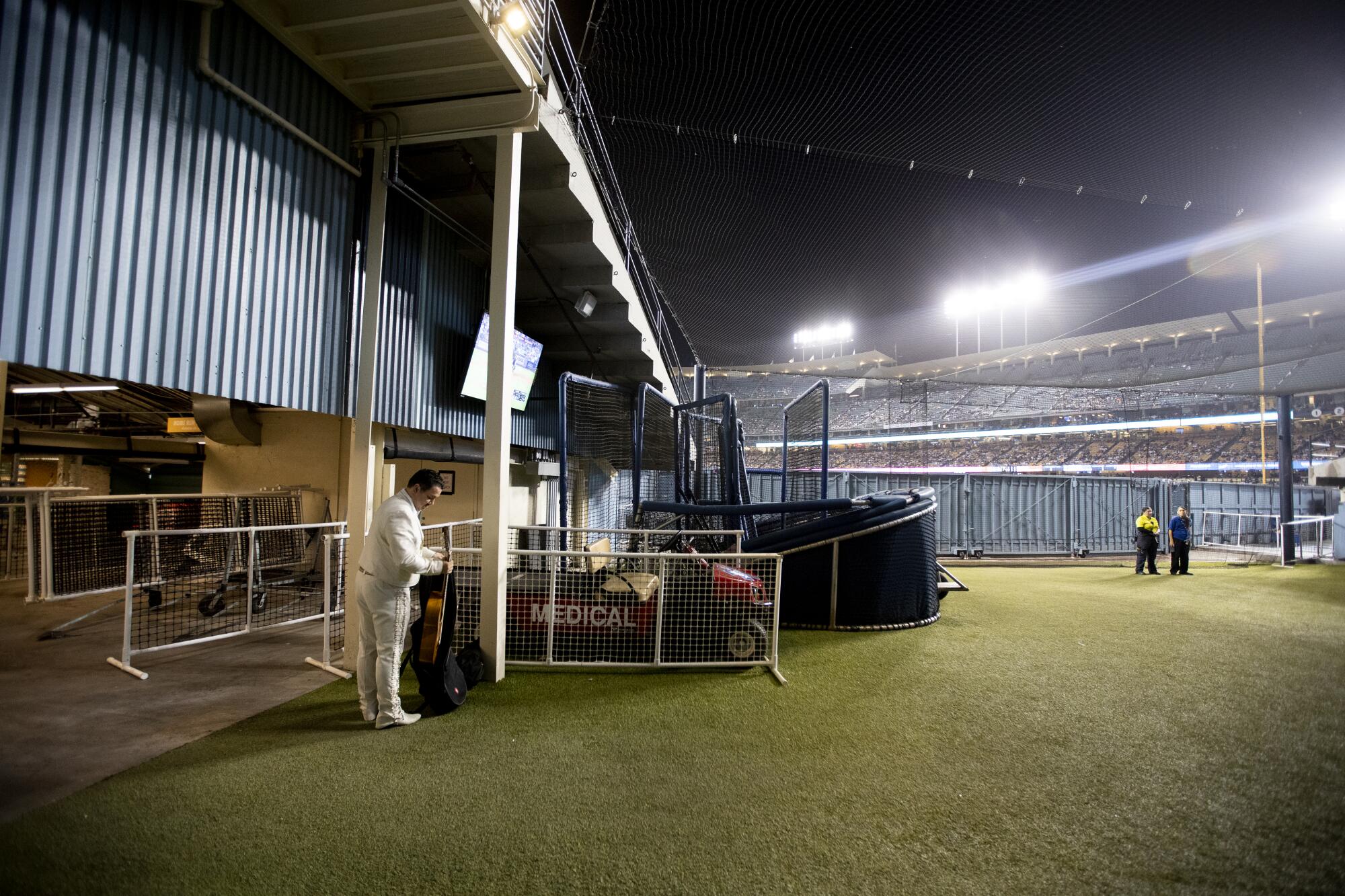
“The stadium’s so big,” Cuéllar said. “It’s pretty daunting.”
The group jumped at the opportunity. Then came the fundamental question: How would this work? Cuéllar didn’t want to the group to be a distraction from the game. A plan was hatched between the two parties. The mariachi would perform a short pregame show and be given four 90-second sets during the game for a set daily fee. The plan was carried out for the first time in Game 3 of the National League Championship Series between the Dodgers and Atlanta Braves, and again in Game 4.
“It’s just great helping this genre stay at a high level,” Cuéllar said.
The Dodgers won Game 3 but lost Game 4, to fall into a three-games-to-one series hole, but the mariachi was a smash. After Game 4, the ensemble performed on television during postgame coverage for Curtis Granderson, Jimmy Rollins, Pedro Martinez and Bob Costas behind the set.
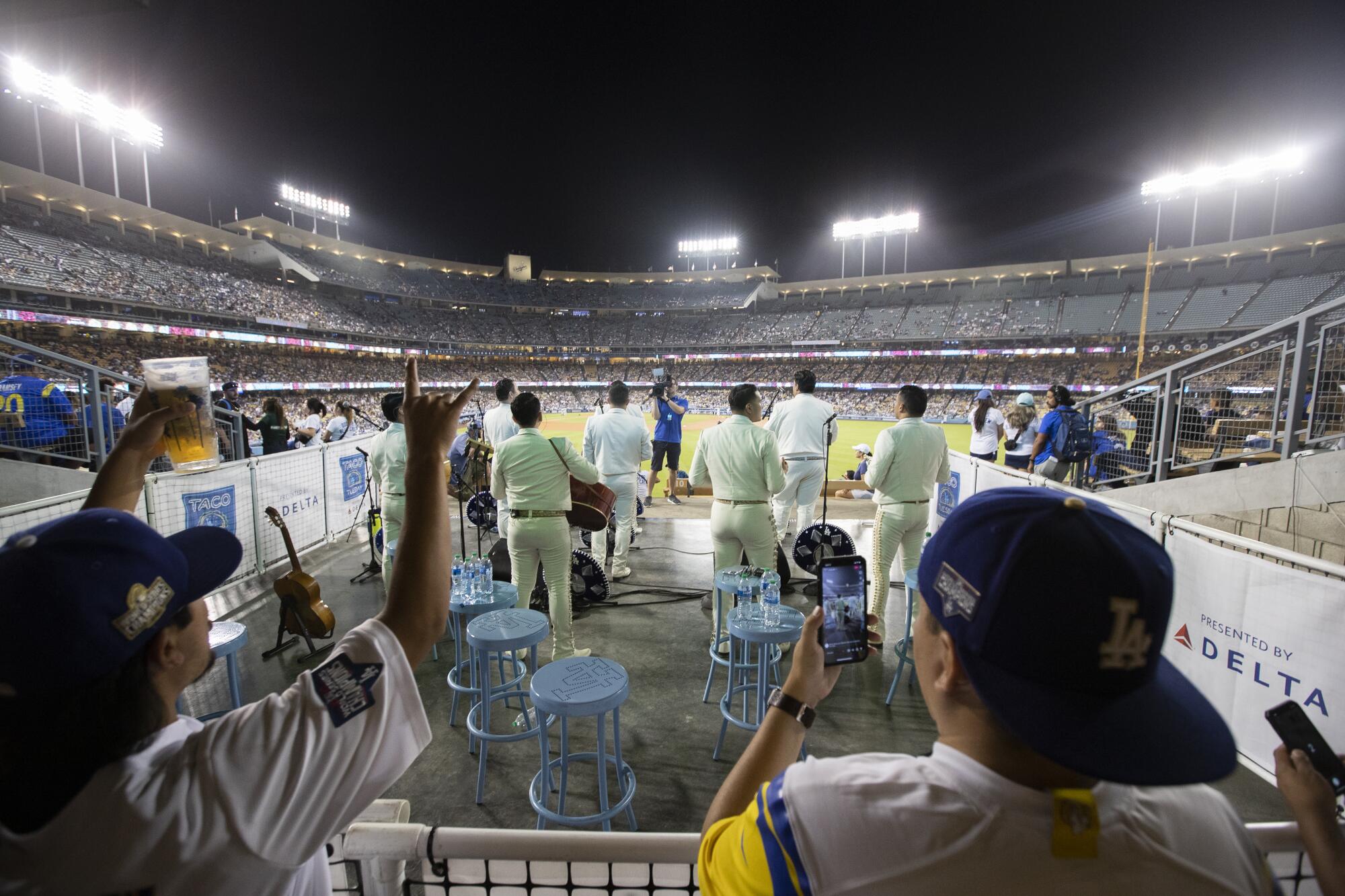
The next night, singer Julián Torres was on the microphone performing with Mariachi Los Toros for Game 5. Torres dedicated the performance to Vicente Fernández, the legendary Mexican singer who had fallen ill and would later die in December.
Are you attending MLB All-Star events at Dodger Stadium? Here are food, snacks and beverages to consider at the ballpark.
“I had to pay homage to him,” Torres, 39, said.
He roused the crowd with “Volver, Volver,” becoming an instant fan favorite for his voice and charisma. The Dodgers beat the Braves to extend their season, but that was their last home game of the season; they lost in Atlanta two days later.
“I saw a lot of surprised faces, but in a positive light,” Torres said. “We were representing our culture, representing L.A., representing Mexico and Mexican music.”
By the end of this season, the representation became a staple at Dodger Stadium. Fans arrived on Tuesdays expecting a familiar show, a wrinkle found only in the ballpark in Los Angeles, from the right-field pavilion at Chavez Ravine. They’ll enjoy another one with a side of playoff baseball Tuesday.
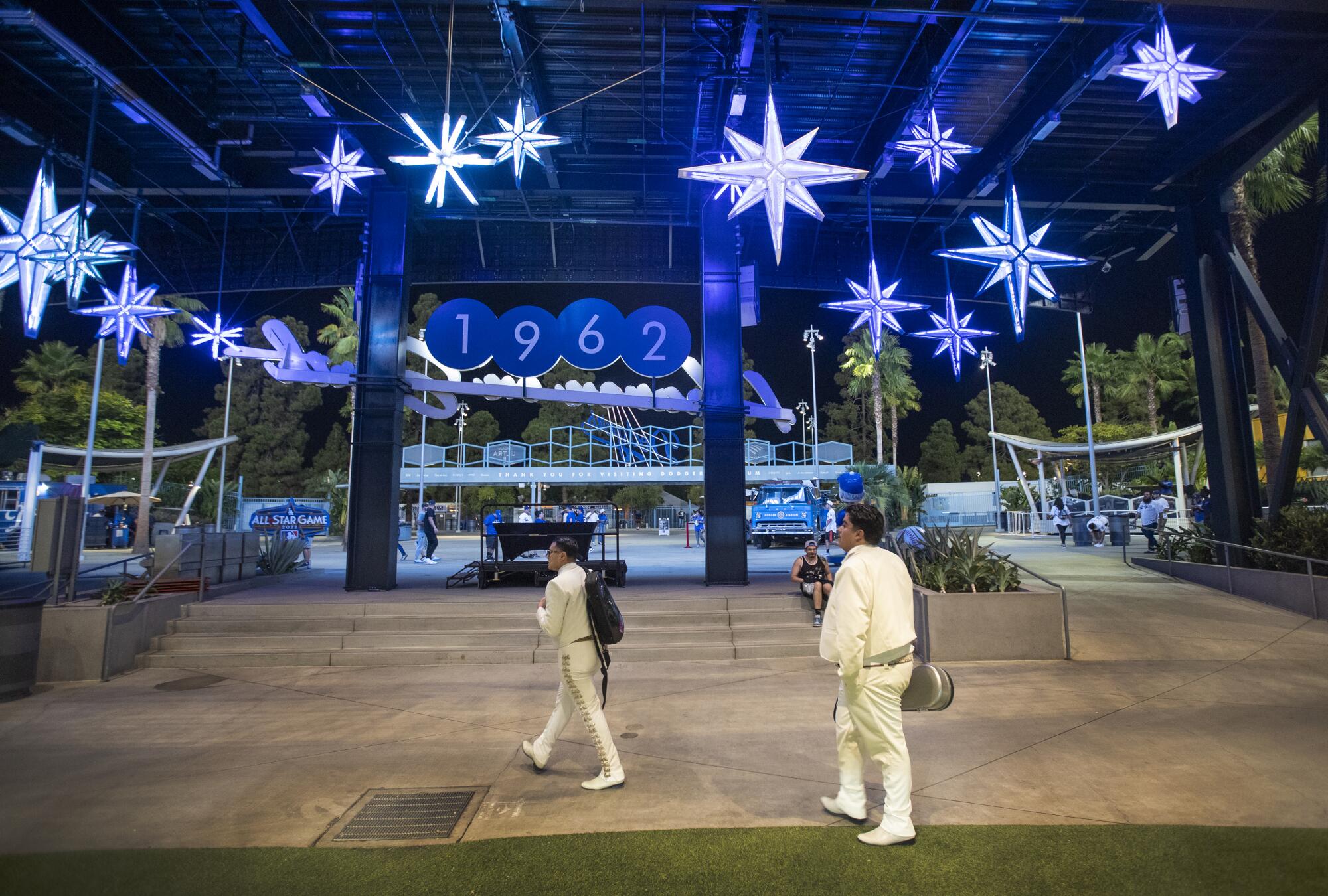
More to Read
Are you a true-blue fan?
Get our Dodgers Dugout newsletter for insights, news and much more.
You may occasionally receive promotional content from the Los Angeles Times.


